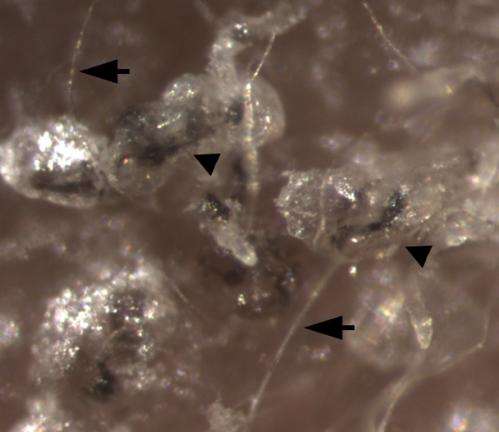Converting adult human cells to hair-follicle-generating stem cells

If the content of many a situation comedy, not to mention late-night TV advertisements, is to be believed, there's an epidemic of balding men, and an intense desire to fix their follicular deficiencies.
One potential approach to reversing hair loss uses stem cells to regenerate the missing or dying hair follicles. But it hasn't been possible to generate sufficient number of hair-follicle-generating stem cells – until now.
Xiaowei "George" Xu, MD, PhD, associate professor of Pathology and Laboratory Medicine and Dermatology at the Perelman School of Medicine, University of Pennsylvania, and colleagues published in Nature Communications a method for converting adult cells into epithelial stem cells (EpSCs), the first time anyone has achieved this in either humans or mice.
The epithelial stem cells, when implanted into immunocompromised mice, regenerated the different cell types of human skin and hair follicles, and even produced structurally recognizable hair shaft, raising the possibility that they may eventually enable hair regeneration in people.
Xu and his team, which includes researchers from Penn's departments of Dermatology and Biology, as well as the New Jersey Institute of Technology, started with human skin cells called dermal fibroblasts. By adding three genes, they converted those cells into induced pluripotent stem cells (iPSCs), which have the capability to differentiate into any cell types in the body. They then converted the iPS cells into epithelial stem cells, normally found at the bulge of hair follicles.
Starting with procedures other research teams had previously worked out to convert iPSCs into keratinocytes, Xu's team demonstrated that by carefully controlling the timing of the growth factors the cells received, they could force the iPSCs to generate large numbers of epithelial stem cells. In the Xu study, the team's protocol succeeded in turning over 25% of the iPSCs into epithelial stem cells in 18 days. Those cells were then purified using the proteins they expressed on their surfaces.
Comparison of the gene expression patterns of the human iPSC-derived epithelial stem cells with epithelial stem cells obtained from human hair follicles showed that the team had succeeded in producing the cells they set out to make in the first place. When they mixed those cells with mouse follicular inductive dermal cells and grafted them onto the skin of immunodeficient mice, they produced functional human epidermis (the outermost layers of skin cells) and follicles structurally similar to human hair follicles.
"This is the first time anyone has made scalable amounts of epithelial stem cells that are capable of generating the epithelial component of hair follicles," Xu says. And those cells have many potential applications, he adds, including wound healing, cosmetics, and hair regeneration.
That said, iPSC-derived epithelial stem cells are not yet ready for use in human subjects, Xu adds. First, a hair follicle contains epithelial cells—a cell type that lines the body's vessels and cavities – as well as a specific kind of adult stem cell called dermal papillae. Xu and his team mixed iPSC-derived EpSCs and mouse dermal cells to generate hair follicles to achieve the growth of the follicles.
"When a person loses hair, they lose both types of cells." Xu explains. "We have solved one major problem, the epithelial component of the hair follicle. We need to figure out a way to also make new dermal papillae cells, and no one has figured that part out yet."
What's more, the process Xu used to create iPSCs involves genetic modification of human cells with genes encoding oncogenic proteins and so needs more refinement. Still, he notes that stem-cell researchers are developing more workarounds, including strategies using only chemical agents.

















